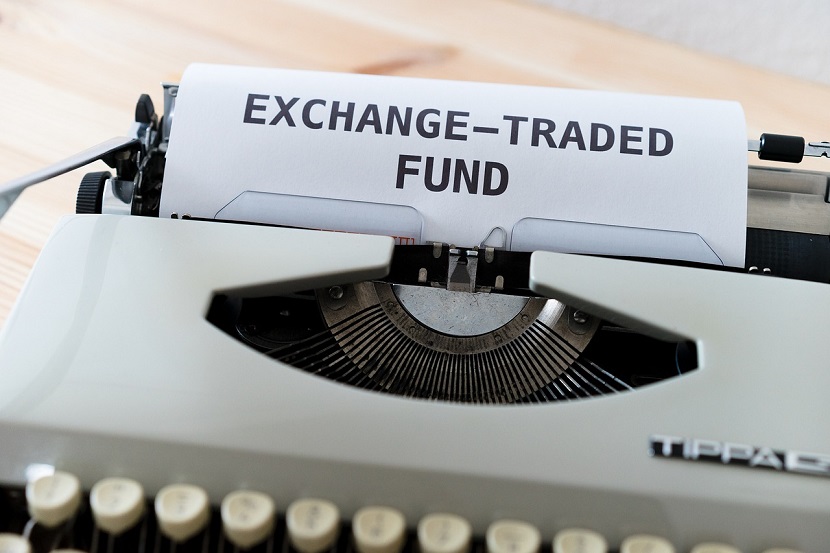As part of learning the basics of investing, you should know the key points of ‘ETF vs. index fund’ dilemma. An index fund is usually bought through a mutual fund, while an exchange-traded fund, or ETF is traded on exchanges and typically track a certain index. First, most people think that ETFs are more flexible and easy to use than most mutual funds. ETFs are easier to trade than index funds and traditional mutual funds, just like common stocks are easier to trade on a stock exchange.
ETFs can also be bought in smaller amounts and are easier to get into than mutual funds. By buying ETFs instead of mutual funds, investors can avoid the need for special accounts and paperwork.
Index mutual funds
Index funds are funds that try to mimic the performance and make-up of a financial market index. They are based on a theoretical part of the market. You can’t invest directly in an index, but you can invest in a fund that tracks an index. When you do this, you are using a form of passive investing that sets rules for which stocks to include and then follows the stocks without trying to beat them. These types of funds follow a benchmark index, like the Nasdaq 100 or S&P 500. Expenses and fees for index funds are lower than those for actively managed funds.
Exchange traded funds – ETFs

ETFs are groups of assets that are traded like stocks or bonds. Like regular stocks, investors can buy and sell them on an open exchange. This is different from mutual funds, whose prices are only available at the end of the day.
There are also differences between mutual funds and ETFs when it comes to how much each one costs. Most of the time, there are no transaction costs for shareholders of mutual funds. ETFs, on the other hand, have lower costs like taxes and management fees. The costs of index mutual funds and ETFs are similar enough that most passive retail investors choose index mutual funds over ETFs. Institutional investors who are more passive, on the other hand, tend to like ETFs.
Main differences between index funds and ETFs
Financial experts think that investing in index funds is a more passive way to invest than investing in value stocks. Experts usually consider both of these types of investments as safe and good for the long term. Investors who are patient and willing to wait for a good deal often incline to value investing. Buying stocks at low prices makes it more likely that you will make money in the long run. In order to beat the market, value investors tend to question a market index and stay away from popular stocks.
The way they are traded
How they are traded is a big difference between ETFs and index funds. You can buy and sell ETFs at any time during the trading day, but you can trade index funds only at the price set at the end of the day. When compared to index funds, ETFs may require less money up front and may save you money on taxes.
Dividend payments add to the fact that ETFs and index funds are bought and sold in different ways. Dividends from index mutual funds can be automatically (and for no extra charge) put back into the fund to buy more shares.
But when an ETF pays a dividend, you’ll have to use the money to buy more shares, which will cost you more in fees and time because you’ll have to log into your account. Some brokers may offer a plan to automatically reinvest dividends in a small number of ETFs.
Most of the time, ETFs have a slight advantage when it comes to annual expense ratios. This is the percentage of the fund’s assets that you’ll pay to have it managed. But, in recent years, the disparity between ETF and index fund fee ratios has narrowed. For more specialized indexes, on the other hand, expense ratios could be very different, with ETFs usually being cheaper.
Minimum investment requirements
You can buy as little as one share of an ETF to invest in it. This used to be the easiest way to start investing with a small amount of money. Several fund managers have lowered the amount of money you need to start investing in their most popular index funds, so you can now start with a small amount.
Differences in tax
People who want to save for retirement over the long term should use tax-advantaged retirement accounts. It’s not just because it’s smart, because we all know that paying less in taxes means more money in your pocket. It’s also because you don’t have to worry about the complicated details of how different types of funds affect your taxes.
Both index funds and ETFs are very tax-efficient, and ETFs are even better than actively managed mutual funds in this regard. Because index funds buy and sell stocks so rarely, they rarely cause investors to have to pay capital gains taxes.
When it comes to saving money on taxes, ETFs are better. ETFs don’t buy or sell stocks for cash as often as index funds do. To cash out, investors sell their shares on the stock market, generally to another investor.
Liquidity
A big difference between ETFs and index funds is how easy it is to buy or sell an investment for cash. This is called “liquidity.” As we’ve already said, you can buy and sell ETFs just like stocks, which means you can buy or sell them whenever the stock market is open.
Index fund trades, like mutual fund transactions, are settled after the market closes. If you sell index fund shares at midday, the transaction will place hours later at market closure price.
What to choose?

If you buy and sell a lot or just like to use more advanced strategies, an ETF is the best choice. Since you can buy and sell ETFs on stock exchanges, you can use limit orders, stop-loss orders, or even margin to buy them. Mutual funds don’t let you use those kinds of strategies.
If you invest in a taxable brokerage account, you may be able to get a bit more tax efficiency from an ETF than from an index fund. But index funds are still a great way to save on taxes, so the difference isn’t that big. Don’t sell an index fund just so you can buy an ETF with the same name. That is just asking for tax problems of all kinds.
If your broker charges you a lot of money for each purchase and you want to be fully invested all the time, buy an index fund. In some cases, you may be able to start investing in index funds with a lower minimum than the equivalent ETF.
Index funds are also a good choice when the corresponding ETF isn’t traded much. So, there’s a big difference between the price of the ETF on the exchange and the value of the assets it holds. The price of an index fund is always equal to the fund’s net asset value.
Always compare prices to make sure you aren’t paying too much for what you want. If you’re not sure whether to invest in an ETF or an index fund, the expense ratio could help you decide.
Bottom line
Both index funds and ETFs are low-cost, low-risk ways to get steady returns over time. But these investments don’t work the same for everyone.
When picking an ETF or an index fund, you’ll need to look at which asset the fund follows and decide if the diversification within the fund is okay with you. Then, compare the expense ratios of each fund and any other fees you might have to pay, like commissions to buy or sell the investment.



